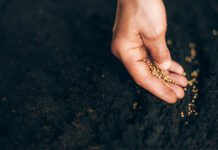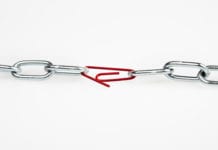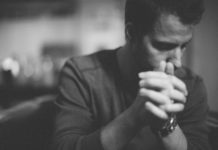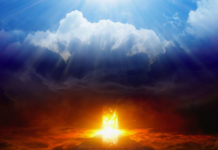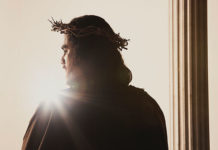by Makoto Fujimura
A Personal Note About the Tragedy in Japan:
In the wake of the earthquake and tsunami that took away so many lives in northern Japan, and the subsequent nuclear power plant crisis, I am struggling to comprehend the magnitude of destruction and ensuing suffering of the beautiful nation which has served as an aesthetic basis for my work.
Some of the coastal seascapes that served as a foundation for Japanese art by Tawaraya Sotatsu, masterpiece of 17th century (at Freer Gallery of Art, Smithsonian) are now forever altered.
This post on “Jesus wept”—so appropriate for the moment—and the additional passages of Jesus weeping over Jerusalem (Luke 13:34) haunt me as I see the images of devastation.
Jesus Wept
“Jesus Wept,” the shortest verse in the Bible, became a center point for The Four Gospels. For the past two Lent seasons I’ve been meditating on John 11 and the passages afterward. When this project became my main focus, I created a workable boundary around my creative effort so that my limited time (a year and a half) to complete it would be most wisely used.
Boundaries
I tell young artists that limitations are glorious. True creativity can thrive within healthy boundaries and limitations. The grander the project and the higher the ambition, the clearer the boundaries need to be. Perhaps I felt so daunted by the project’s scope and ambition that I instinctively chose the shortest verse in the Bible to focus on!
A Systematic Visual Theology
By focusing on this singular verse, I began developing a theological dialogue with a whole, perhaps formulating a systematic visual theology. I knew early on that this Bible would be the only illumined Bible in existence without an explicit image of Jesus on the cross. If the focus is on Jesus’ tears, then the crucifix will be, in a sense, everywhere on the pages. Not explicitly, but implicitly.
The Largest Painting
I started with the largest painting, titled “Charis-Kairos” (the Tears of Christ). This work, which I call my “Genesis” painting, uses the same technique of Nihonga adapted for use of Belgian linen.
Influences
When I began creating The Four Holy Gospels, I had just finished a series of works influenced by the modernist master Georges Rouault. Rouault often illumined the dark chaos of Paris in the early 20th century by depicting faces of ordinary human beings illumined in the darkness in their sufferings and oppression. I wanted to create a series of large paintings hung side by side with Rouault’s paintings. This “Soliloquies” exhibit, at Dillon Gallery (winter 2009) was historic, as the Rouault estate had never allowed such a collaboration with a living artist. As I pondered on how to creatively depict “Jesus’ tears,” the technique I developed for the Rouault exhibit became an initial impetus.
Materials Used
In the Nihonga technique I utilize minerals, gold, and sumi ink (all water-based pigments), which are then mixed with Japanese hide glue, and then layered over many times on paper or silk. I used materials that I have been saving, or new minerals sent by Nihonga shops in Tokyo. For the frontispiece to Matthew, Mark and Luke, I use a traditional paper no longer being made in large sizes. Subsequently, for the Rouault exhibit (because I wanted these works to be large, i.e. 80×64”), I used high quality handwoven Belgian linen and developed my own gesso (the foundation to build layers of minerals upon) so that Nihonga technique can be used on top of them.
UPDATE: Clarity on “Charis-Kairos”
Charis is a series of paintings I did in 2008 (I had a major exhibit in NYC at Dillon Gallery, titled “Charis”), so the painting is already part of a greater body of works. This particular series is called Charis-Kairos, and I do mean it in the sense of the original Greek of “grace time.” “The Tears of Christ” is a subtitle given to this particular work for the Four Holy Gospels project, so it is not a direct translation of the Greek, but an additional title given to the piece. I will be creating other “Charis-Kairos” works in the future with different subtitles.
Next Thursday: In Part Four, Mako discusses his gospel according to Matthew painting.
Fujimura’s The Four Holy Gospels is on sale at our online store.





